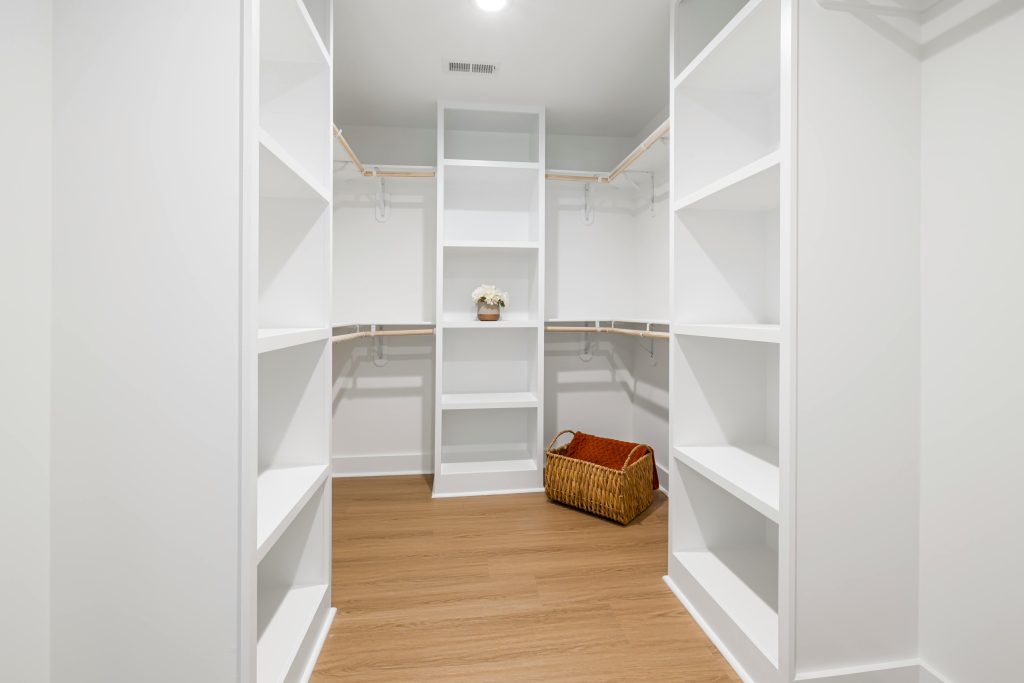
Table of Contents
- Key Points
- Why Downsizing Before Moving Makes Sense
- Getting Started: The Downsizing Mindset
- Room-by-Room Downsizing Strategy
- The Three-Box Method for Effective Decluttering
- Timing Your Downsizing Process
- Maximizing Value from Unwanted Items
- Working with Professional Movers
- Final Preparations and Moving Day
- Embracing Your New Beginning
- References
Key Points
- Clutter is an issue for most American homes, and it can become particularly problematic when moving.
- The time leading up to a move is the perfect time to downsize possessions, which can save stress and money.
- Understanding how to do so is the first step towards making your move go smoothly, so you can start fresh in your new home.
Did you know that the average home contains approximately 300,000 items? Recent research shows that about 84 percent of Americans say that their homes are not organized or sufficiently clean. And more than half of survey respondents said that the problem was enough to be a serious source of stress.1
The associated strain can be multiplied for those facing a move. The flipside is that moving is the perfect opportunity and motivation to declutter.
As moving experts, we have put together some advice on how to downsize and declutter your home. The information below lays out steps to take, so that you can reduce your possessions and the amount of stress associated with the move. Keep reading to learn how to transform your moving experience and save some money along the way.
Why Downsizing Before Moving Makes Sense
The benefits of choosing to declutter before moving extend far beyond simply having fewer boxes to pack. When you downsize home belongings strategically, you will discover significant cost savings on moving services. Ask professional movers in Greenville SC and they will tell you that they typically charge based on weight and volume, so fewer items directly translates to lower moving expenses.
Additionally, starting fresh in your new space becomes much easier when you are not dragging along items that no longer serve your lifestyle. Many homeowners find that downsizing home possessions actually improves their quality of life, creating more organized, peaceful living environments.2
Getting Started: The Downsizing Mindset
Before diving into the physical process of sorting through your belongings, it is essential to adopt the right mindset. Downsizing is obviously not about getting rid of everything you own, but rather being intentional with what you choose to keep.
Several years ago, the Japanese professional organizer Marie Kondo wrote a book called The Life-Changing Magic of Tidying Up, which started a minimalist craze. Her basic instruction was to consider every possession you own and determine if it “sparks joy,” then get rid of items that fall short of this standard.
If that sounds too “new agey” to you, think of this way: evaluate what function or value something has, then make a determination about whether it is worth keeping. You also might visualize your new home and consider how you want to live in it.
Also, think about any lifestyle changes (for example, moving from a larger home in the suburbs to a smaller, more urban setting) and future goals (like making room for children or having space for a home gym) as you begin this process. This mental preparation will guide your decisions throughout the downsizing journey and help you stay motivated when the process feels overwhelming.
Room-by-Room Downsizing Strategy
Next, we can move logistics. Here are some recommendations on how to handle downsizing different items and spaces.
The Kitchen: Streamlining Your Culinary Tools
Kitchens often harbor the most redundant items in any home. Begin by removing duplicate appliances, outdated gadgets, and dishes you rarely use. Keep only the cooking tools and dinnerware that you actively use or that hold special meaning. Consider selling or donating specialty appliances.
Focus on versatile items that serve multiple purposes. For instance, a high-quality chef’s knife can replace several specialized cutting tools, and a few well-chosen pots and pans can handle most cooking tasks.
Clothing and Personal Items: Building a Curated Wardrobe
Clothing represents one of the easiest categories to declutter before moving. Try on items you are unsure about and honestly assess whether they fit your current lifestyle and body. Donate clothes that no longer fit, are out of style, or have not been worn in over a year.
For sentimental clothing items, consider keeping just a few meaningful pieces rather than entire collections. This approach allows you to honor memories while maintaining a practical wardrobe.
Books and Media: Transitioning to Digital
With digital alternatives readily available, physical books, DVDs, and CDs offer excellent downsizing opportunities. Keep only the books you will reference again or that hold special significance. Many local libraries and schools welcome book donations, giving your collection a new purpose.
Consider transitioning to digital versions of reference materials and entertainment media. This switch not only reduces physical clutter but also makes your collection more portable and accessible.
Furniture: Right-Sizing for Your New Space
Measure your new home’s rooms before deciding which furniture pieces to keep. Large furniture items significantly impact moving costs, so be selective about what you take on the journey. Consider whether oversized pieces will fit comfortably in your new space or if smaller, more versatile options might work better.
Quality pieces that serve multiple functions often make the best candidates for keeping. An ottoman with a storage compartment, a dining table that can serve as a workspace, or a bookshelf that doubles as a room divider maximizes both function and space efficiency.
The Three-Box Method for Effective Decluttering
Regardless of what room or set of items you are working on, the three-box system can help. The containers correspond to: Keep, Donate, and Discard.
For the “Keep” box, ensure each item earns its place by serving a current purpose or holding genuine sentimental value. The “Donate” box should include items in good condition that others could use. The “Discard” box is for items that are broken, damaged beyond repair, or no longer safe to use.
This method forces you to make definitive decisions about each item rather than simply moving things around. Be honest about which category each item belongs in, and resist the urge to create a “maybe” pile that will only slow your progress.
Timing Your Downsizing Process
Start your downsizing process at least a month before your moving date, if possible. This timeline allows you to work through your belongings methodically without feeling rushed. Begin with areas you use less frequently, such as storage rooms, garages, or guest bedrooms, then progress to daily-use areas closer to your moving date.
Creating a schedule helps maintain momentum and ensures you complete the process before your moving company arrives. Dedicate specific time blocks to different rooms or categories, and stick to your timeline to avoid last-minute stress.
Maximizing Value from Unwanted Items
Downsizing does not have to mean losing money on your belongings. Research the value of items you are considering discarding—some may be worth selling online, at consignment shops, or through garage sales. Electronics, designer clothing, and collectibles often retain value and can help offset moving expenses.
For items with minimal resale value, focus on donating to maximize tax deductions and community benefit. Many charitable organizations will even pick up large donations, saving you time and effort.
Working with Professional Movers
When you contact local movers in Greenville SC inform them of your downsizing efforts. Many moving companies offer additional services like packing assistance or storage solutions that can complement your downsizing strategy.
Experienced movers can also provide valuable advice about what items transport well and which might be better replaced after your move. Choosing the right moving company can help you make informed decisions about preparing for the big day.
Final Preparations and Moving Day
As moving day approaches, do a final walkthrough with your downsized belongings. This last check ensures you have not overlooked anything important and confirms that everything you plan to move truly belongs in your new home.
Prepare a “first day” box with essential items you will need immediately in your new home. This box should include basic cleaning supplies, important documents, medications, and a change of clothes. Having these necessities easily accessible will help you settle in comfortably while you unpack your downsized belongings.
Embracing Your New Beginning
Downsizing before a move represents more than just reducing your possessions—it is about making space for new experiences and opportunities. By thoughtfully curating your belongings, you are setting the foundation for a more organized, intentional lifestyle in your new home.
Remember that downsizing is a skill that improves with practice. Be patient with yourself throughout the process, and celebrate the progress you make. Follow the advice above on how to downsize and declutter before moving, and remember to stay focused on your goals and maintain momentum throughout the process. With proper planning and execution, you will arrive at your new home with exactly what you need to start this exciting new chapter of your life.
Smith Dray is rated one of the top moving companies in the Carolinas. We pride ourselves on offering expert services by trained, experienced moving professionals. Contact us today to discuss your moving needs with the best moving company Greenville SC has to offer.
References
- Jean Chatzky, “One in Four Americans Has a Clutter Problem—And Could Be Sitting on Some Serious Cash,” NBC News, May 2017, “https://www.nbcnews.com/business/personal-finance/one-four-americans-has-clutter-problem-could-be-sitting-some-n766681.
- Suzie Pileggi Pawelski, MAPP, and James Pawelski, Ph.D., “Why Getting Rid of Things Can Change Your Life,” Psychology Today, December 2023, https://www.psychologytoday.com/us/blog/happy-together/202312/money-cant-buy-happiness-but-getting-rid-of-clutter-can.




